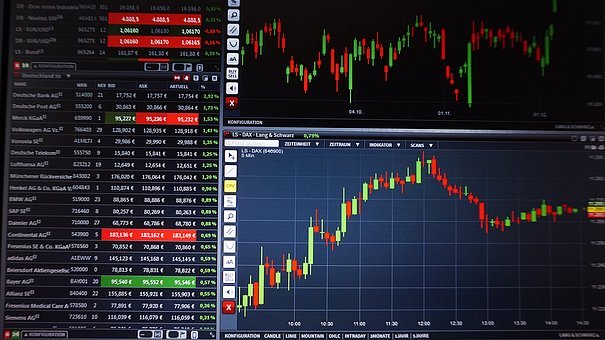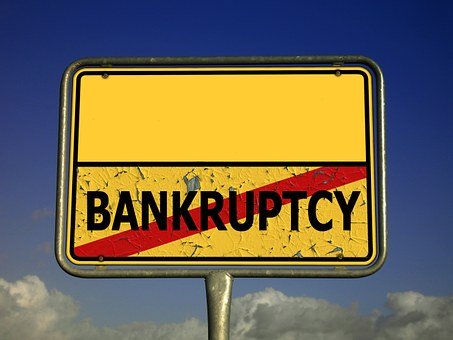Commercial desertification of the city centre is not inevitable.A German city of 19,000 inhabitants Wassenberg has tried an interesting experiment to put an end to the commercial desertification of the city centre.
In Wassenberg the initial observation reflected a situation “dark and desolate”
One retailer after another had to close his store. Few passers-by were lost in the shopping street. The city of 19,000 inhabitants in North Rhine-Westphalia was hoping for help. Thanks to a marketing consultant the revitalization was a success. Wassenberg has had a fate in recent years, shared by many small and medium-sized German cities: the commercial desertification of the city centre. The reasons for this situation are identical throughout Germany (as in France).
On the one hand, young people prefer to spend their money on online shopping rather than in downtown stores.
On the other hand, the big cities of the region, often through shopping centres, attract customers ready to buy. Wassenberg faced a particularly high number of competitors. Many people preferred to go shopping in Aachen, Düsseldorf, Mönchengladbach or Cologne. In addition, Wassenberg is on the Dutch border. Its inhabitants are within a 20-minute drive of a very popular factory outlet called Roermond.
It all started with a market analysis that consisted of studying neighbouring cities by asking the question: what do they offer in terms of businesses?
It quickly became clear that there would be no point in attracting a new H & M or Lidl as the demand for this type of product is being met by local competition bids.
The marketing expert then examined the demographics and purchasing power of the population and found that the population was mostly high-income, mature people. In order to survive as a small town against the big rivals, you had to occupy niches to fight again the commercial desertification of the City centre.
To determine these niches any offer that existed within a radius of 20 km around the city was eliminated. The commercial desertification of the city centre has been halted thanks to a new concept based on four “growth pillars”:
Culture,
pleasure,
tourism
and events.
The aim was to create themed outlets for which development potential has been identified and which do not exist in neighbouring cities.
For the “pleasure” growth pillar, restaurants have been opened.
For the “Tourism” growth pillar, new businesses have been created for hikers and leisure enthusiasts. A nature park is located near the Schwalm-Nette region, on the border of the Netherlands.
For the growth pillar “culture”, artists such as painters and musicians were approached, and they were able to choose empty stores for readings, lectures and exhibitions.
At the heart of the concept is the growth pillar “events”.
It has been set up a night market once a month. As with all other pillars, this market should only offer quality products, not cheap clothing or other hardware items such as sale. On the other hand, this new market offers home-brewed draft beer, wines, bread, cheeses and typical culinary specialties.
The market has brought people back to the city, which has also benefited existing local businesses. There was suddenly a central anchor event. In the past, people dreamed of the big city. Today, they find parties, drinks and good food in their own city. Result: citizens feel good and are connected to the city again. It is a new acceptance that has not existed for decades. Today, people say, “This is my city.”
Meanwhile, nearby cities like Erkelenz and Geilenkirchen have followed suit and have also established night markets: “Plagiarism is always the best compliment of less inspired contemporaries.”
You have to offer what the online retailer cannot offer: a combination of services and products, more personalized. Today, Amazon and local retailers often offer the same products. Then, retailers are surprised to see that people are learning and testing products locally, but then go to Amazon and order there.
The gradual disappearance of city centres is also due to the development of shopping centres. While many cities think that these huge buildings will be an economic engine, the marketing specialist of Wassenberg thinks the opposite: “These blocks of concrete make disappear the animation and the diversity of the city centres and are already gradually exceeded”, explains the expert. According to this expert, shopping centres are an indicator of urban mismanagement: architects were often responsible for designing large sales areas. Only when the buildings are in the process of completion will developers begin to look for tenants for commercial space. In fact, it would be necessary to do exactly the opposite of doing marketing studies before instead of creating commercial surfaces through architecture and only eventually to ask: who is supposed to go? ”
Instead of shopping centres, you have to rely on a concept he calls Emma Quartier. Many small shops with individual offers, which do not compete but complement each other. “I do not go downtown because I want to buy a jacket at H & M, but because I want some spice”, for example
Kirsten trusted the concept and opened her “Dumb in the Café Post” shop: “I’ve always dreamed of owning a boutique, but it’s always been difficult,” she says, and then she learns about the projects. of the city of Wassenberg in a newspaper and she said
“It’s my chance, if it’s not now, it’ll never be”
His concept, a shop where different artists can exhibit their works and where they have the opportunity to use a free workshop. She found her local thanks to the help of the municipality. In the meantime, she moved and expanded her store, so that not only artists can be staged, but one can also have breakfast in the morning and a coffee and cake in the afternoon, workshops are made available, lectures and readings are organized. The move from the periphery stores to the centre of the city was also initiated this operation was called: healthy shrinking. It is in the interest of all companies looking for qualified personnel to offer businesses and sufficient animation to motivate newcomers to settle in this type of city.
Why does it work in some cities and not at all in others? “Because this must be a top priority, if the mayor puts trade as a top priority for his city and is fighting for it, it will make the process easier. Wassenberg Mayor Manfred Winkens is looking forward to a new life in his city. “By 2020, we will propose nearly 60 different cultural events,” he said. “From art exhibitions to outdoor events such as the book market, the medieval market, cabaret nights and concerts.”
This example cannot be transposed as is in France because the concept of “ droit au bail” to lease is completely unknown in Germany. These notions are a real brake and handicap an average French city in the fight against the commercial desertification of the city centre. I was recently confronted with the following ubiquitous situation: on the outskirts of Strasbourg for a commercial space of less than 200 m2 empty for a long time and for which the owner asks a rent of 4.000 € per month the taker was obliged to fulfil a lease entitlement of € 50,000. For years, the “ droit au bail or pas de porte “ has been considered in many studies as obstacles to French growth and Europe has often expressed its wish to see a modernization reform initiated on this subject.
Georges Vonfelt GEVO Sarl











